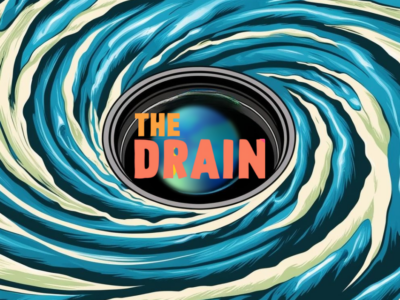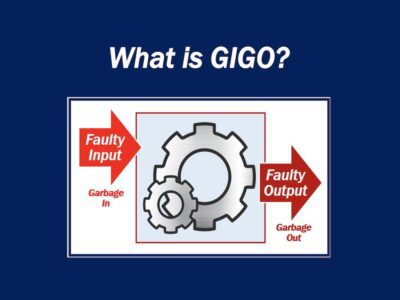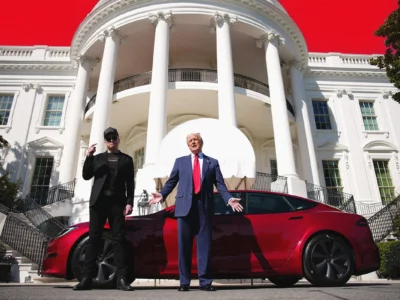The Emperor’s New Endangerment Theory (Part II)
To justify a decision not to regulate CO2 from power plants, EPA had to twist statutory language beyond all recognition.
According to EPA, carbon emissions from the U.S. power sector are too insignificant to warrant regulation. This is a bizarre conclusion: U.S. power sector’s emissions are around 6.5 billion tons, just below Russia’s total emissions from all sectors. Before making this "insignificance" finding, EPA first had to offer a novel reading of the Clean Air Act (CAA). EPA says that before it could properly regulate those emissions, it would first have to make a formal fin...
CONTINUE READINGThe “Big Beautiful Bill” is One Damn Dirty Deal
The Drain is a weekly roundup of environmental and climate news from Legal Planet.
My family is about to take a road trip. Out our window we will see beaches, lakes, and a whole lot of public land that would be eligible to be sold off to developers and corporations under the recent version of a budget bill that Republicans want to rush through this week. Welcome to The Drain, a weekly roundup of environmental and climate news. Subscribe to the newsletter here. There are many unpopular ideas in the Republicans’ mega bill, known officially a...
CONTINUE READINGThe Emperor’s New Endangerment Theory (Part I)
EPA says the electricity sector’s climate impacts aren’t significant. Really??
EPA has proposed a novel reading of the Clean Air Act (CAA) that would foreclose any regulation of CO2 emissions from power plants. EPA’s core argument is that the statute requires it to determine whether an industry’s emissions “cause or contribute significantly” to climate change and that the industry’s carbon emissions don’t meet that standard. On its face, this seems like a questionable conclusion, given that the U.S. power industry’s emissions are...
CONTINUE READINGHere’s How the Palisades and Altadena Can Rebuild Better
In partnership with UCLA, the Blue Ribbon Commission on Climate Action and Fire-Safe Recovery has released its final recommendations.
The January 2025 Los Angeles fires were one of the most expensive climate disasters in our country’s history. They displaced tight-knit communities, took lives, shook our region to its core, and reminded us that as the climate continues to change, the risk of future disaster looms large. This recognition lead County Supervisor Lindsey Horvath to form the Blue Ribbon Commission on Climate Action and Fire-Safe Recovery (BRC), an expert commission tasked—with research ...
CONTINUE READINGMajor permitting reform will (likely) be bipartisan
Senate parliamentarian shoots down effort to use “pay to play” to avoid judicial review of NEPA
Several weeks ago I wrote about an effort by House Republicans to use reconciliation, a process which avoids the Senate filibuster, for a “pay to play” proposal to gut NEPA. The proposal would have allowed sponsors of projects going through NEPA review to pay an extra fee and avoid judicial review of the NEPA review. My prediction was that, if the provision was enacted, administrations would lowball the fee (which is based on the estimate of the cost for NEPA com...
CONTINUE READINGA Path Forward for Vehicle Electrification?
It’s been a rough few months for vehicle electrification efforts in the United States. While Congress swaps proposals to eliminate federal electric vehicle purchase, manufacturing, and charging incentives in order to “pay for” massive tax cuts for the wealthy, President Trump last week signed a Congressional Review Act resolution that claims to eliminate California’s nation-leading zero-emission vehicle standards (a move that, as Ann Carlson noted last month, is ...
CONTINUE READINGClimate Adaptation Finance: Garbage In, Garbage Out
A new study reveals the hard truth about the lack of real adaptation data.
Today in Science, a new study delicately uses a lot of words to tell us something that many have long suspected: we really don't know what in the world is going on. The study, by three scholars at Oxford University's Environmental Change Institute, notes that pretty much all climate adaptation funds focus on inputs -- how much has been devoted to a project -- rather than outputs, i.e. has anything worked? And even on the input front, there is a huge problem. We ...
CONTINUE READINGTalking to Skeptics About Clean Energy
Some people will stop listening if you talk about climate change. But there are other arguments.
Cimate change provides a compelling reason to support clean energy. But that argument can be futile — or worse, counterproductive — when listeners don’t take climate change seriously or reject the idea altogether. Fortunately, there are other arguments that may better appeal to them. You might begin by pointing out that clean energy isn't just a liberal thing. Texas is #1 for wind power, #2 (and rising) for solar, and #3 for EVs. Here are some talking point...
CONTINUE READINGIt’s back.
Land sale provisions are back in reconciliation. And they are far worse than before.
Last time I posted on this topic, the Republican majority in the House of Representatives was considering a provision to sell or dispose of public lands in Utah and Nevada, arguably on the grounds of facilitating needed housing production around growing metropolitan areas. That provision was criticized across the political spectrum, received opposition from a leading House Republican, and ultimately was stripped from the bill. The Senate Committee on Energy and Natu...
CONTINUE READINGCan Public Ownership Fix Our Electricity Woes? It’s Complicated
New UCLA report "Power Struggle: California's Electric Utility Ownership Dilemma" by Sylvie Ashford, Mohit Chhabra, and Ruthie Lazenby
This post is co-authored by Sylvie Ashford and Mohit Chhabra. California’s investor-owned utilities (IOUs) are under intense scrutiny for causing deadly wildfires and charging some of the nation’s highest electricity rates. Adding to these challenges, IOUs are required to make significant clean energy and grid investments to achieve the state’s goal of a net zero carbon economy by 2045, while keeping electricity affordable and reliable. These big asks are of...
CONTINUE READING










